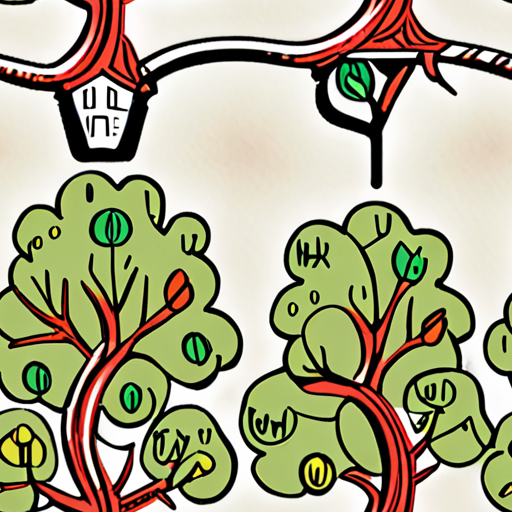Effective storytelling relies heavily on the art of plot development, which serves as the backbone of any compelling narrative. At its core, plot development refers to the process of crafting a sequence of events that propel the story forward, engage the audience, and ultimately resolve the conflict. Whether you’re a seasoned author or an aspiring writer, mastering the intricacies of plot development is crucial for creating stories that captivate readers and leave a lasting impression.

What is Plot Development?
As a writer, I’ve always been fascinated by the intricacies of plot development, and how it can elevate a story from mere entertainment to a truly immersive experience.
- Exposition: This is the setup phase of the story, where we introduce our characters, setting, and situation. It’s essential to establish the tone and mood of the narrative, and to give the reader a sense of what to expect.
- Rising Action: As the story unfolds, tensions rise, and conflicts escalate. This is where the plot thickens, and the stakes get higher. The rising action should be filled with twists and turns that keep the reader engaged and invested.
- Climax: This is the most intense moment in the story, where the conflict reaches its peak, and the outcome is uncertain. The climax should be a turning point that propels the story forward and sets the stage for the resolution.
- Falling Action: After the climax, the story begins to unwind, and the consequences of the characters’ actions become clear. This is where the loose ends are tied up, and the reader gets closure.
- Resolution: The final act of the story, where the plot is resolved, and the characters find their happy ending or tragic demise. The resolution should leave the reader with a lasting impression and a sense of satisfaction.
In my own writing, I strive to master the art of plot development, weaving a narrative that’s engaging, suspenseful, and emotionally resonant. By understanding the intricacies of plot development, writers can create stories that captivate audiences and leave a lasting impact.
The Importance of Plot Development
A well-crafted plot is the backbone of any successful story. It’s what keeps readers hooked, invested, and eager to find out what happens next. A good plot should have:
- Tension and Conflict: Without tension and conflict, a story would be dull and predictable. The plot should be filled with obstacles, challenges, and setbacks that test the characters’ resolve and ingenuity.
- Character Growth: As the story unfolds, characters should evolve and grow, learning valuable lessons and developing new skills. This character growth should be organic and authentic, driven by the plot rather than forced upon the reader.
- Pacing and Timing: The pacing of the plot should be carefully controlled, building momentum and releasing tension at just the right moments. The timing of key events should be precise, creating a sense of urgency and importance.
Mastering Plot Development
To master the art of plot development, writers need to:
- Develop a Strong Concept: A solid concept is the foundation of any successful story. It should be unique, original, and compelling, with a clear premise and a defined scope.
- Create Complex Characters: Well-rounded characters are essential to a engaging plot. They should be multi-dimensional, relatable, and flawed, with their own motivations and desires.
- Build Tension and Suspense: A good plot should be filled with tension and suspense, keeping the reader guessing and invested until the very end.
The 5 Essential Elements of Plot Development
As a writer, understanding the fundamental components of plot development is crucial to crafting a compelling narrative that engages your audience.
-
Exposition
This initial stage sets the scene, introducing the protagonist, setting, and situation. A well-crafted exposition establishes the tone and pace of the story, drawing the reader into the world you’ve created.
-
Rising Action
The rising action builds tension and conflict, propelling the story forward through a series of events that test the protagonist’s abilities and resolve. This phase should escalate the stakes, creating suspense and anticipation in the reader.
-
Climax
The climax represents the most intense moment in the story, often marked by a turning point or a dramatic revelation. This pivotal event should be carefully crafted to maximize emotional impact and drive the narrative towards its conclusion.
-
Falling Action
Following the climax, the falling action unwinds the tension, resolving loose ends and tying up loose threads. This phase should provide closure and a sense of completion, leaving the reader satisfied and invested in the outcome.
-
Resolution
The final stage of plot development ties together the various threads, providing a sense of resolution and completion. A well-executed resolution should leave the reader with a lasting impression, reflecting on the themes and emotions evoked throughout the narrative.

Plot Development Process
As a writer, understanding the plot development process is crucial to crafting a compelling story that engages your audience.
- Step 1: Conceptualization
- Create a concept statement that summarizes the core idea of your story.
- Develop character profiles, including motivations, goals, and backstories.
- Establish the setting, including the time period, location, and cultural context.
- Step 2: Outlining
- Determine the genre and tone of your story.
- Create a three-act structure, including the inciting incident, turning point, and resolution.
- Develop a scene list, including descriptions of key events and settings.
- Step 3: Character Development
- Develop character arcs, including character growth and change.
- Create dialogue and interactions between characters.
- Establish character motivations and conflicts.
- Step 4: Plot Twists and Turns
- Introduce red herrings and misdirection to keep the audience guessing.
- Create plot twists and turns that surprise and delight the audience.
- Establish a sense of tension and suspense.
- Step 5: Revision and Editing
- Review your manuscript for consistency and coherence.
- Edit for grammar, punctuation, and spelling errors.
- Making revisions based on feedback from beta readers and editors.
This involves brainstorming ideas, developing characters, and establishing the setting for your story.
This involves creating a detailed outline of your story, including the plot twists and turns.
This involves fleshing out your characters, including their motivations, conflicts, and relationships.
This involves adding unexpected surprises and complications to keep your audience engaged.
This involves reviewing and refining your work to ensure it meets your standards.

Developing a Plot
In my experience as a writer, I’ve found that developing a plot is a crucial aspect of crafting a compelling story.
- Craft a Compelling Conflict: A good plot starts with a strong conflict that drives the story forward. This can be an internal struggle, a personal challenge, or an external obstacle that the protagonist must overcome.
- Develop Well-Rounded Characters: Your characters should be multi-dimensional and relatable, with their own motivations, desires, and flaws. This will help readers become invested in their journey and care about the outcome.
- Maintain a Clear Structure: A well-structured plot typically includes a beginning, middle, and end, with a clear setup, escalation, and resolution. This helps to create a sense of tension and release, keeping readers engaged and interested.
- Build Tension Through Rising Action: As the story unfolds, the stakes should rise, creating a sense of urgency and tension. This can be achieved through a series of challenges, setbacks, and obstacles that the protagonist must navigate.
- Ensure a Satisfying Resolution: The ending should be satisfying and fulfilling, tying together loose ends and providing closure for the reader. This can be achieved through a clever twist, a dramatic revelation, or a heartwarming moment of triumph.
When it comes to plotting, there are many tools and techniques available to help you get started. Some popular methods include:
- The Snowflake Method: This involves breaking down your story into smaller and smaller parts, starting with a simple idea and gradually adding details and complexity.
- The Three-Act Structure: This classic approach divides the story into three acts, each with its own unique characteristics and goals.
- The Hero’s Journey: This timeless tale of transformation follows a hero who embarks on a quest, facing challenges and growing as a result.
Ultimately, the key to developing a great plot is to find what works best for you and your story. Experiment with different techniques, take risks, and don’t be afraid to try something new.
Plot Development Tips
Here are some additional tips to keep in mind when developing your plot:
- Start with a Strong Premise: Your premise should be clear, concise, and compelling, setting the stage for the rest of the story.
- Keep it Simple: Don’t overcomplicate things – a simple, yet effective plot is often more engaging than a convoluted one.
- Make it Relevant: Ensure that your plot is relevant to your target audience and aligns with their interests and needs.
- Be Consistent: Stick to your plan and avoid introducing unnecessary twists or turns that might confuse or alienate your readers.
Common Plot Mistakes to Avoid
Avoid these common pitfalls when developing your plot:
- Predictable Outcomes: Make sure the outcome isn’t too obvious or predictable, leaving room for surprise and suspense.
- Lack of Character Growth: Ensure that your characters learn and grow throughout the story, making meaningful changes and developments.
- Overuse of Clichés: Steer clear of overused tropes and clichés, opting for fresh and original ideas instead.
- Inconsistent Pacing: Maintain a consistent pace, avoiding slow sections and sudden jolts that might disrupt the flow.
The Four Stages of Plot Development
I’ve often been asked about the fundamental building blocks of storytelling, and I’m happy to share my insights on the four stages of plot development.
- Stage 1: Setup
- Establish the protagonist’s goals, motivations, and backstory
- Introduce the setting and its significance to the story
- Present the inciting incident that sets the plot in motion
- Stage 2: Rising Action
- Introduce conflicts and complications that test the protagonist’s abilities
- Create tension and suspense through escalating stakes and obstacles
- Show the protagonist’s growth and development as they adapt to changing circumstances
- Stage 3: Crisis
- Present the climax of the story, where the protagonist faces their greatest fear or obstacle
- Show the consequences of the protagonist’s actions and decisions
- Create a sense of urgency and tension as the protagonist fights to overcome the crisis
- Stage 4: Resolution
- Tie up loose ends and resolve any remaining conflicts
- Show the protagonist’s growth and transformation as a result of their experiences
This initial stage sets the foundation for the rest of the story, introducing the protagonist, setting, and inciting incident that sets the plot in motion.
In this stage, the protagonist navigates obstacles, confronts challenges, and makes decisions that propel the story forward.
The crisis stage marks a turning point in the story, where the protagonist faces their greatest challenge yet.
In the final stage, the protagonist resolves the conflict, achieves their goal, and finds closure.

Cultivating a Plot
As a writer, I’ve found that cultivating a plot is a crucial step in crafting a compelling story.
- Developing a Concept: Start by brainstorming ideas and concepts that interest you. Ask yourself questions like “What if?” and “Why?” to help flesh out your idea.
- Creating a Premise: Once you have a concept, distill it down into a concise premise that captures the essence of your story.
- Building a Narrative Arc: A strong narrative arc is essential to keeping readers engaged. Consider the beginning, middle, and end of your story, and how they relate to each other.
- Introducing Conflict and Tension: Conflict and tension drive the plot forward and keep readers invested in the story. Think about how you can introduce obstacles and challenges for your characters to overcome.
- Resolving the Story: Finally, consider how you’ll resolve the story and bring everything full circle. Make sure the ending feels satisfying and ties together the various threads of the narrative.
When it comes to cultivating a plot, there are many tools and techniques at your disposal. Some popular methods include:
- The Snowflake Method: This involves breaking down your story into smaller and smaller parts, eventually building up to a complete outline.
- The Three-Act Structure: This classic structure consists of setup, confrontation, and resolution, and can be applied to a wide range of stories.
- The Hero’s Journey: This framework, developed by Joseph Campbell, outlines the stages a hero typically goes through in a story.
Ultimately, the key to cultivating a plot is to find what works best for you and your unique writing style. Experiment with different techniques and approaches until you find what helps you tell the most compelling stories.
Conclusion
Cultivating a plot takes time and effort, but the payoff is well worth it. By developing a strong concept, creating a solid premise, building a narrative arc, introducing conflict and tension, and resolving the story, you’ll be well on your way to crafting a compelling tale that will engage and captivate your readers.

0 Comments